iPhone: Moon, Moon on Dome,
Supernova 2024ggi, Corona Borealis
Posted: 20 April 2024
Thursday, 18 April 2024, was cloudy. The sky was mostly clear on Friday, 19 April.
|
Open: Friday, 19 April 2024, 1814 MST Temperature: 91°F |
Session: 1954 Conditions: Mostly clear, breezy |
Equipment:
12" f/8 LX600 w/StarLock
2" 24mm UWA eyepiece
2" 30mm eyepiece
2" 9mm 100° eyepiece
12x50 binoculars
Camera:
iPhone 15 Pro Max
1832 MST: Relaxed on the observatory patio bench while waiting for the breezes to calm down.
1824 MST: My view of the eastern sky with the gibbous Moon in the sky.
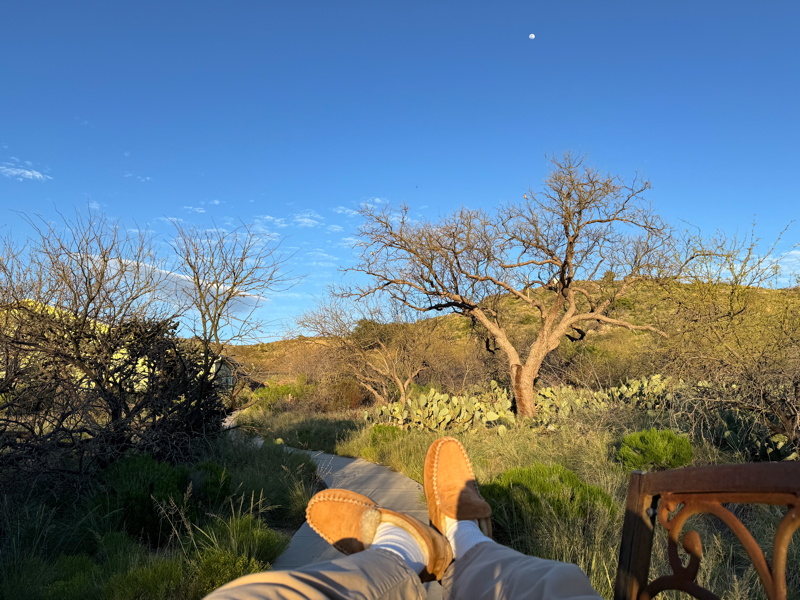
1834 MST: Calm now so went back inside the observatory.
1835 MST: LX600 ON, StarLock OFF, High Precision OFF.
Viewed the Moon, 102X.
1843 MST: Back to the bench to await sunset.
1858 MST: Sunset (time approximate due to clouds).
1859 MST: The western sky taken with the iPhone 15 Pro Max (5X lens, cropped).
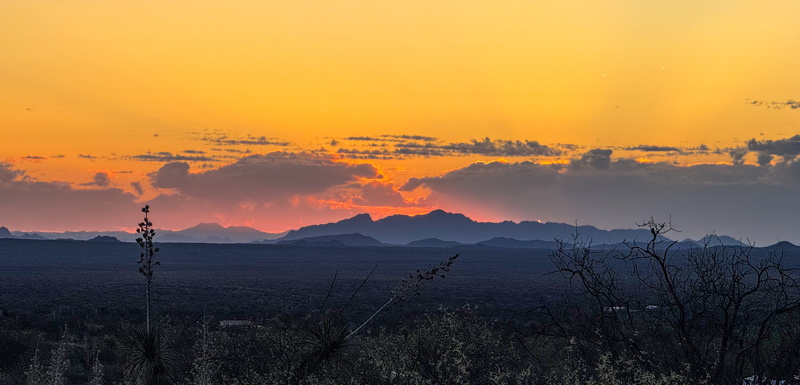
1902 MST: Back in the observatory.
Viewed the Moon, 102X and 81X.
Mounted the iPhone on the 30mm eyepiece with the 3-axis adapter and took this afocal 81X image using NightCap Camera (ISO 55, 1/1250sec, 1X lens).
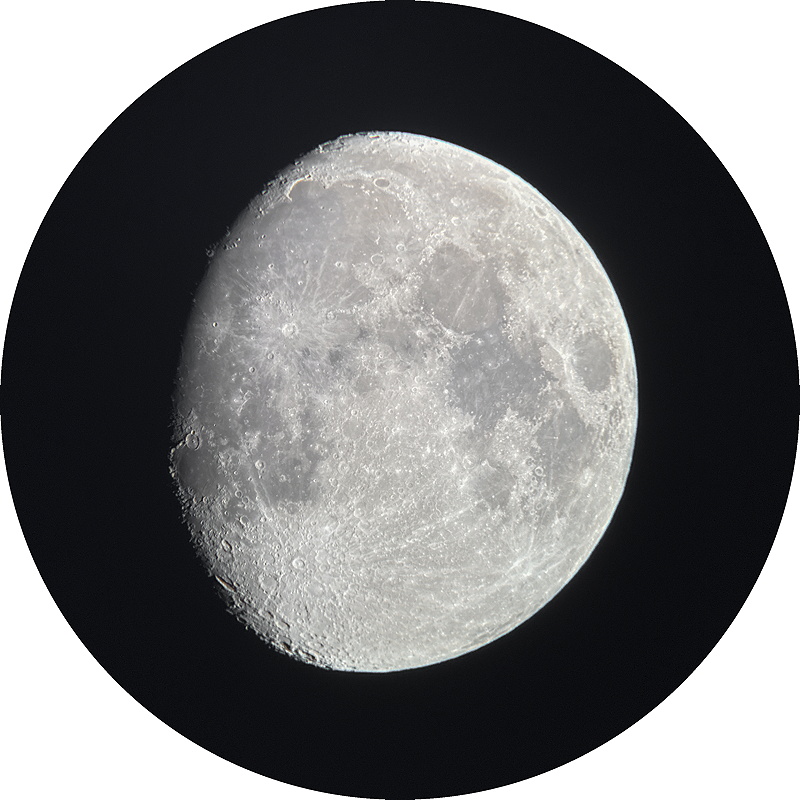
Viewed the Moon, 271X. Then mounted the iPhone on the 9mm eyepiece and took these afocal 271X images using NightCap Camera at various exposures (1X lens).
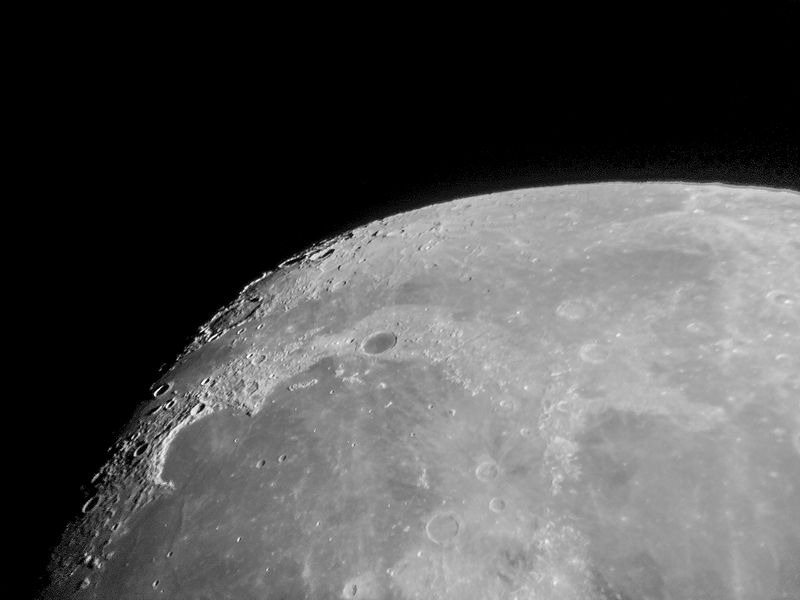
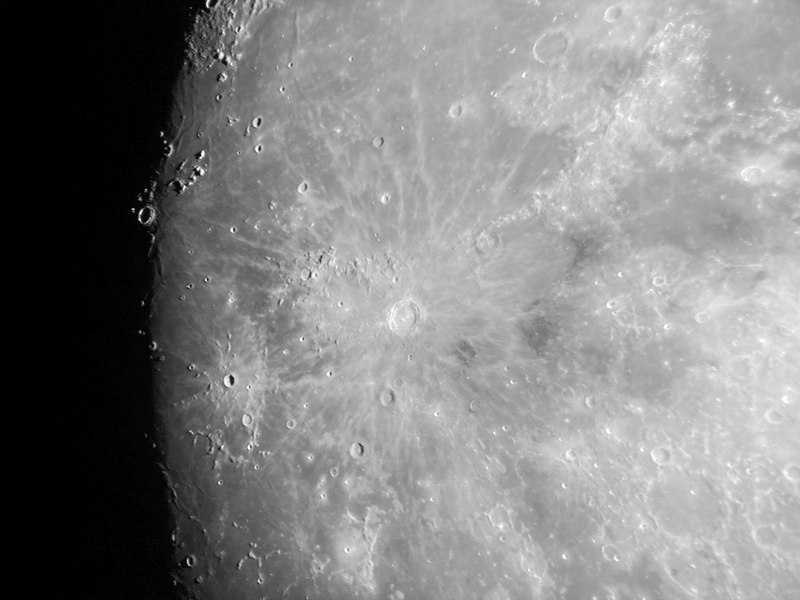
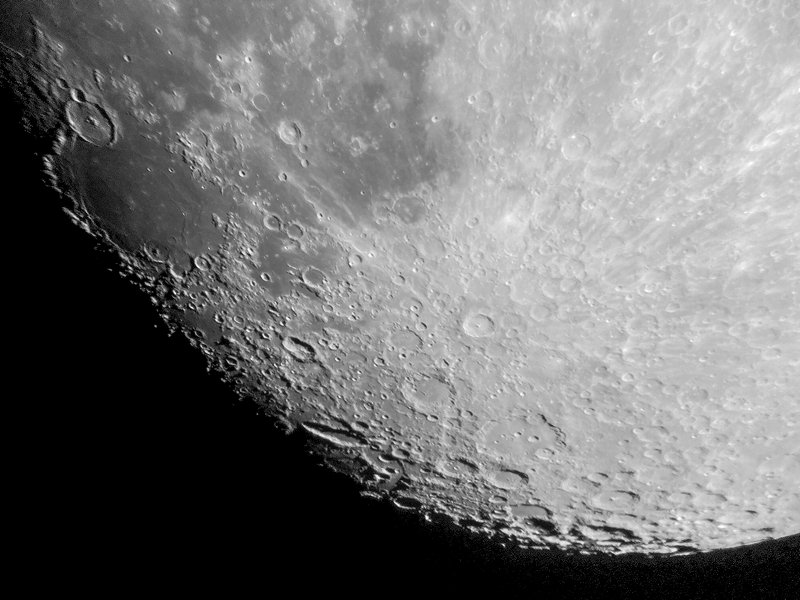
1923 MST: Returned to the bench and began trying to sight Comet 12P/Pons-Brooks in the western sky as twilight faded using 12x50 binoculars. The bright moonlit sky also hampered viewing.
2003 MST: Sighted the comet, 12x50 binoculars. A pinpoint nucleus and a faint coma were visible in the binoculars. The comet was not naked eye visible low in the bright western sky.
2004 MST: Back in the observatory.
2008 MST: Briefly stepped outside of the observatory and took this iPhone photograph of the Moon projected onto the observatory dome. Used the Camera app (Night Mode, 3 seconds, 1X lens).
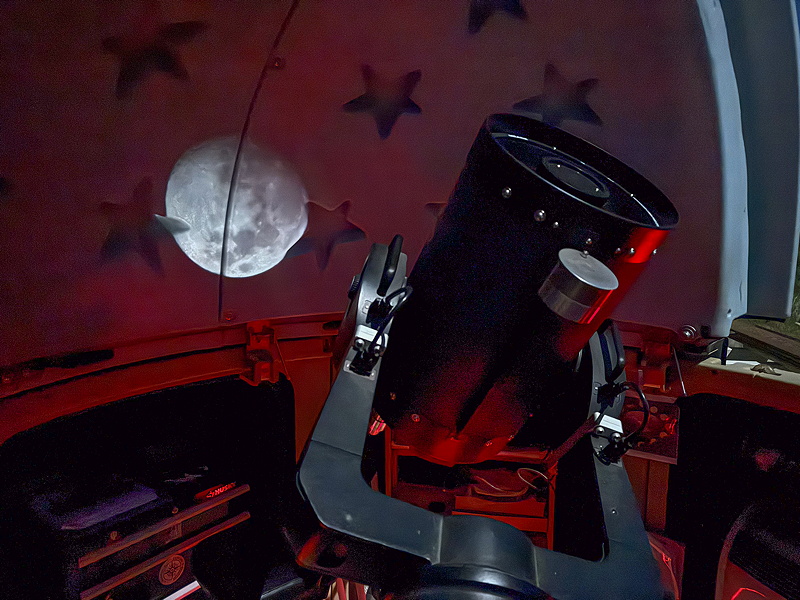
2013 MST: High Precision ON.
Slewed to NGC3621 to check on Supernova 2024ggi. In the bright moonlit sky the supernova was visible, but the galaxy was very faint, 102X and 81X. The supernova seemed slightly fainter than it had been two nights previously.
Attached the LiDAR Cover on the iPhone and mounted the iPhone on the 30mm eyepiece.
2025 MST: StarLock ON.
2031 MST: Took this StarLock autoguided, afocal 81X, image of NGC3621 with Supernova 2024ggi using NightCap Camera (Long Exposure, Light Boost, ISO 4000, 1sec, 1 minute, 1X lens). The image closely resembles the view to the eye in the eyepiece.

Mouseover or tap on image for pointer to supernova
2033 MST: StarLock OFF.
Viewed NGC3621 and SN2024ggi, 102X.
2037 MST: LX600 OFF.
2044 MST: In anticipation of the star T CrB going nova in 2024 I took this handheld iPhone 15 Pro Max of Corona Borealis in the bright moonlit eastern sky using the Camera app (Night Mode, 3 seconds, 2X lens). I had also taken a photo on 18 March 2024; see the Sky Astrophotography Album for that photo and a star chart showing the location of the star T CrB, which is not yet visible in my images.
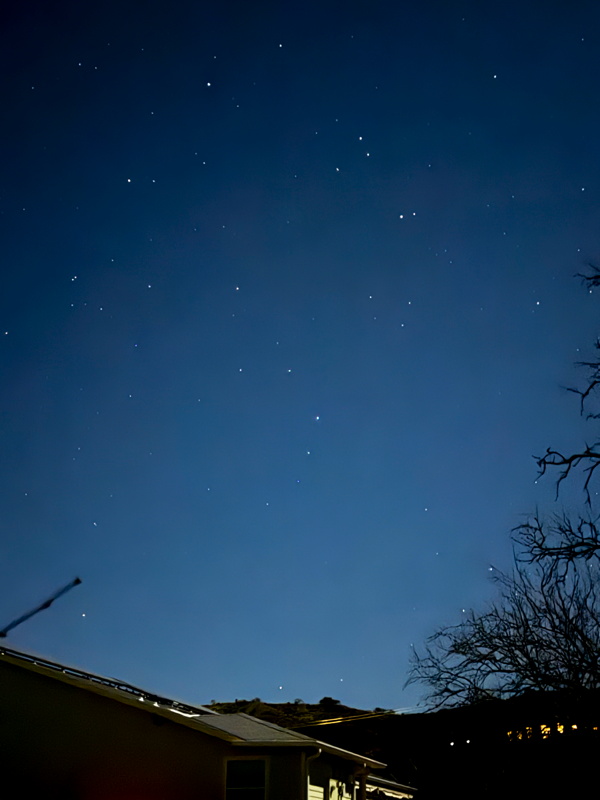
I also took this handheld iPhone photo of Corona Borealis with North approximately up using the Camera app (Night Mode, 3 seconds, 5X lens).

|
Close: Friday, 19 April 2024, 2051 MST Temperature: 68°F |
Session Length: 2h 37m Conditions: Clear |
Comments are welcome using Email. Please read the Email Etiquette guidance.
Cassiopeia Observatory Home Page
Copyright ©2024 Michael L. Weasner / mweasner@mac.com.
URL = http://www.weasner.com/co/Reports/2024/04/20/index.html
